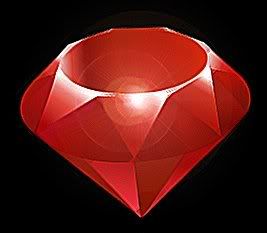|
|
Post by Masterbard Alyster Darkharp on Jul 26, 2008 23:18:21 GMT -5
Asgorath World-Shaper, the Concordant Dragon, The Great Eternal Wheel, Swallower of Shades, the Ninefold Dragon, Creator of Dragonkind Intermediate DeitySymbol: A multicolored metallic disk Home Plane: Unknown (is Outlands in non-realms 3E sources) Alignment: Neutral Portfolio: Dragonkind, balance, peace Worshipers: Dragons Cleric Alignments: LG, NG, CG, LN, N, CN, LE, NE, CE Domains: Dragon*, Knowledge, Magic, Strength, Travel, Wealth* [Spell] Favored Weapon: Scimitar (claw) Aliases: Io Races of the Dragon EntryIo is the Ninefold Dragon, known as such because he embodies all alignments within his outlook. Io is regarded as the creator of dragons, subtly manipulating the destinies of all dragons by operating out in the open where nobody suspects his involvement. Io is concerned solely with the affairs of dragons and dragonkind, interfering in their lives only when he deems it absolutely necessary. DogmaIo cares only for his “children” the dragons and their continued existence in the world. In some cases, this means taking the side of the dragons against other races. In other situations, Io might help nondragons fight against a dragon who would otherwise jeopardize the survivability of the race as a whole. He prefers to remain out of conflicts between dragons, though if such a conflict threatens to escalate, he might step in (either personally or by dispatching Aasterinian or some other servitor). ClergyIo has even fewer clerics or shrines than most of the other draconic deities, since his outlook is so broad and all-encompassing. Still, even the most devoted cleric of Bahamut, Tiamat, or another dragon god pays at least a modicum of homage to the Ninefold Dragon. He also occasionally finds clerics or adepts among the reptilian races, such as lizardfolk and troglodytes. Io’s clerics are few, and they have no established dogma. Each individual has his own way of paying homage to the creator of his kind. Candidates for Io’s clergy embark on an introspective journey to rid themselves of every judgmental impulse that colors their opinion of the world. They do so in the hope of one day perceiving all creatures and events with true objectivity. Many candidates never succeed in this endeavor, even after a lifetime of soul-searching. Io counts no faiths among his enemies, knowing the value of neutrality in one’s outlook. Even those of greatly varying alignment can find common cause under the banner of the Ninefold Dragon. 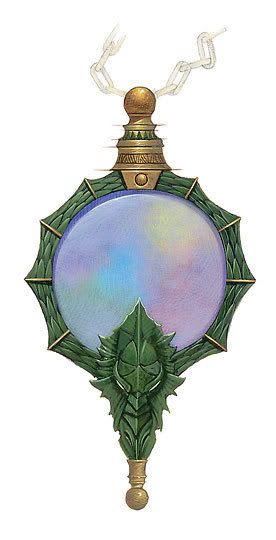 Io's Holy Symbol Io's Holy SymbolIo’s followers are tasked with seemingly random quests, such as “Decrease the hoard of by one-quarter” or “Fortify influence over its region.” Io rarely offers an explanation for his assignments, but expects every follower to trust his impartiality. Half-dragon followers of Io seek acceptance and inner peace in the god’s boundless love for his children. A typical quest involves finding other half-dragons and revealing Io’s love to them. Locating or consecrating a shrine to Io—sometimes in hostile territory—is a common mission for clerics of Io. Sometimes a follower must journey to the lair of a wyrm or older true dragon, face the dweller, and return with a piece of long-forgotten lore.
Prayers
Io’s prayers have a deep resonating quality that pleasantly reverberates throughout the entire body and invigorates the follower. One often-used supplication is “Io, Swallower of Shades, shine in the face of your servant.” Among half-dragons, prayers to Io are more like questions: “Why, though I walk with you, are my steps in darkness?” Io does not usually answer prayers, though he does listen to them.
Temples
Io has very few temples, as is typical of dragon deities. Small shrines in his honor are erected among some draconic or reptilian peoples. His half-dragon priests are wandering ascetics, some of whom advance to become Singers of Concordance. A shrine to Io is a simple pillared construction open to the air and covered with a half-dome, the inside of which is usually inlaid with draconic lore. These shrines are always located in wide-open spaces, such as the middle of a desert, the center of a valley, on a featureless plain, or atop a mountain peak.
Rites
The theme of blending is central to observances in Io’s honor. He contains the essence of all dragons and shows no favoritism or enmity toward a given alignment or deity. Since half-dragons are themselves blended beings, they make excellent leaders of such rituals. A typical activity might be to mix wine with a drop of blood from each participant, then pass the cup for all to drink. Io’s name is evoked in matters of dragon heritage and history, and when predicting the future of dragons and dragonkind. “Only the discerning eye of Io knows how this will turn out.”
Herald and Allies
Io’s most impressive herald is Aasterinian, a Huge (mature adult) brass dragon who acts as his messenger but also intervenes in matters of great importance. Io tends to send a herald blooded to the race of the dragonblood recipient. For example, to a half-dragon or a kobold, Io’s herald is a half-dragon/half-kobold 9th-level fighter/9th-level sorcerer His allies are celestial or fiendish dragons. Planar dragons (described in Chapter 4 of Draconomicon), although not outsiders, can also be called on for assistance at the DM’s discretion, using the dragon ally spells in Draconomicon.
Cult of the Dragon Entry
Asgorath is a greater power of the Outer Planes. He is said to encompass all alignments in his being, but he is often regarded as neutral. His portfolio is creation, and his symbol is an unadorned circle, representing totality. In the Outer Planes, he is more commonly known as Io, and the location of his domain is unknown.
Draconomicon 2E Entry
Asgorath the World-Shaper is reputed in myth and legend to be the creator of the universe, and of dragonkind. The true alignment of Asgorath is unknown; each dragon that worships Asgorath. and the god has followers among every species of dragonkind, believes wholeheartedly that the god
shares its alignment. (Thus, reds believe that Asgorath is ChaoticEvil, as implied in the Book of the World mentioned at the beginning of the chapter, while bronzes believe Asgorath is Lawful Good.)
Asgorath never manifests himself before his faithful. (In fact, myths claim that Asgorath manifested himself only once, during the act of creating the universe.) He makes his existence felt as a powerful, dynamic presence in the minds of other dragons.
Notes: Io is a largely unknown deity in FR, except by the extremely well studied scholar, dragon, or the Dragon Deities themselves. He does not exist to my knowledge in the Great Tree Cosmology, but since he is an official non-realms deity, and the great wheel and tree are connected via Sigil, the possibility of gaining knowledge of him does exist, however rare.
Sources: Draconomicon 3E, Races of the Dragon, Cult of the Dragon, Draconomicon 2E |
|
|
|
Post by Masterbard Alyster Darkharp on Jul 26, 2008 23:19:50 GMT -5
Null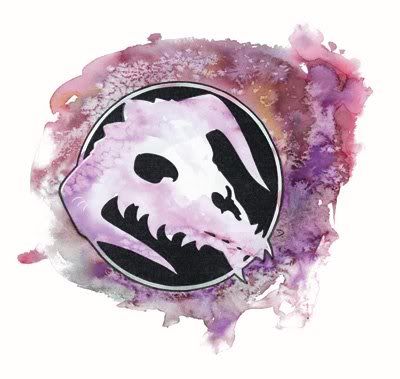 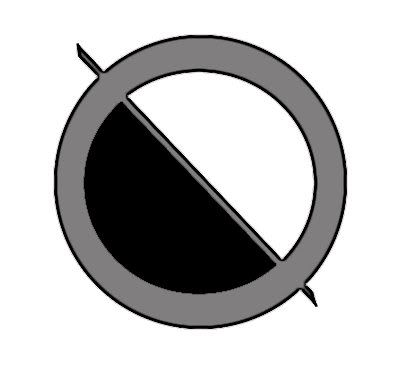 Death Wyrm, Guardian of the lost, Night Dragon, Reaver Death Wyrm, Guardian of the lost, Night Dragon, Reaver Greater Deity of Death and the DeadAlignment: Lawful Neutral Portfolio: Fate, Death, Judgement Domains: Death, Fate, Knowledge, Law, Scalykind Aliases: Faluzure, Chronepsis Domain Name: Dragon Eyrie (The Summit) Allies: Kalzareinad (dead) Foes: Bahamut (Xymor), Hlal, Tamara, Tiamat Symbol: A circle divided diagonally into white and black semicircles or a draconic skull Worshippers: Dragons Worshipers Alignment: Any (Guardian of the Lost) or LE, NE, CE (Reaver) Favored Weapon: Unarmed Strike Cult of the Dragon Entry#1Null is worshiped as a two-aspected dragon deity in the Torilian crystal sphere. Here he is regarded as both a lawful evil lesser power of Carceri and a lawful neutral intermediate power of the Outlands. His portfolio is death and the dead. In his evil aspect, he is Reaver, and his portfolio is the taking of life, decay, the undead, energy draining, and necromancy. In his neutral aspect, he is known as the Guardian of the Lost, and is the guardian of the dead and the shepherd of dragon spirits to the afterlife. In this aspect, his portfolio is the dead, exhaustion, final judgment, and fatalism. His symbols are a circle divided diagonally into white and black semicircles (the Guardian of the Lost) or a draconic skull (Reaver). In the Outer Planes it is commonly known that Null is, in fact, two different deities known as Faluzure (the Reaver aspect, who regarded as neutral evil), whose domain is the Mausoleum of Pain in Minethys, and Chronepsis (the Guardian of the Lost aspect, who is regarded as neutral), whose domain is the Mausoleum of Chronepsis in the Outlands. Cult of the Dragon Entry #2Null (NUL) is the draconic god of death in all its myriad aspects. He is venerated by dragons of all alignments to some degree in his role as Guardian of the Lost. Many dragons of evil alignment, particularly shadow dragons and dracoliches venerate Null in his aspect as Reaver, the Death Wyrm. Null is also known in some obscure texts as Chronepsis or Faluzure, but those aliases may simply be the names of draconic deities of other worlds or his names in other crystal spheres. As with most draconic deities of Faerûn, Null's faith has been slowly dwindling for centuries, and, as of the Fall of the Gods, he had but a handful of devoted adherents (some of whom were undead). Since the Time of Troubles, Null has begun to make inroads among the Sacred Ones of the Cult of the Dragon. Null's motivation is in part due to a desire to staunch his gradual loss of power and in part to counter Tiamat's recent attempts to incorporate the Followers of the Scaly Way into her own faith. A few ill-regarded members of Sembian Cult cell have begun to whisper that Null is .the Dead Dragon who shall rule the world entire with the Sacred Ones as his worldly vassals, but it is unknown if Null has made any such claim himself. Null is said to speak with the dusty croak of the undead. He is arrogant, fatalistic, proud, and totally lacking in any sense of humor. The Night Dragon does not anger easily, but instead slowly nurtures grudges that eventually blossom into undying hatreds for slights and attacks (imagined or otherwise). Null's residences, both mausoleums, are said to coexist in part on the Negative Material Plane and the Demiplane of Shadows; in fact, the two death houses may in reality be one structure that exists both in the Outlands and Carceri. Null has a long-standing hatred of both Tiamat and Bahamut, who are said to be his siblings. While Null and Tiamat were once allied, some rift in the prehistory of the Realms has driven them into everlasting enmity. Null nurtures a deep grudge against Hlal as a result of an elaborate practical joke that robbed the Death Wyrm of his dignity centuries ago. While the Night Dragon has little patience for most of the other surviving draconic gods, he bitterly resents Tamara's attempts to interfere with the inevitability of death and darkness and hates her with a special passion. The one deity Null was on somewhat friendly terms with was Kalzareinad, a demipower of draconic magic who was said to have aided Sammaster.s creation of the first dracolich, and the loss of this ally has led scholars to speculate that he may soon seek others to replace him. Draconomicon 2E EntryNull, the draconic god of death and the dead, is worshiped in two seemingly contradictory aspects. As Reaver, god of death, he is Lawful Evil and is worshiped by many evil dragons. In this aspect, Null enjoys the taking of life, and he blesses others who serve him in this capacity. Null works according to a plan and a schedule, however, which has been set before him by Fate, and so he is not his own master. As Guardian of the Lost, Null is the Lawful Neutral guardian of the dead. As such, he shepherds the animae (souls) of dragons to their respective planes when they die, and he ensures they are no longer troubled by enemies they may have had while alive. In this aspect, Null is worshiped by dragons of all alignments; individuals who've just lost someone close to them will sometimes make offerings to Null to speed the dearly departed's animae to its final resting place. Null appears as a region of impenetrable blackness in the shape of a huge dragon. He is surrounded by an aura of numbing cold, and it is said that to touch Null is instant death. Notes: Null is listed as two seperate deities in the Draconomicon 3E, Faluzure and Chronepsis. This is because he is a dual aspected deity in the Great Tree Cosmology, and exists as two deities in the Great Wheel Cosmology.We know that Null exists as a Deity in Official 3E Realmslore because he is mentioned in the Monster Deities Appendix of Faiths and Pantheons (page 221) and the Dragon Eyrie section of Players Guide to Faerun (page 150).
Sources: The Cult of the Dragon, Draconomicon 2E, Greg Hall (Null Symbol #2), Faiths and Pantheons, Players Guide to Faerun |
|
|
|
Post by Masterbard Alyster Darkharp on Jul 26, 2008 23:20:35 GMT -5
Xymor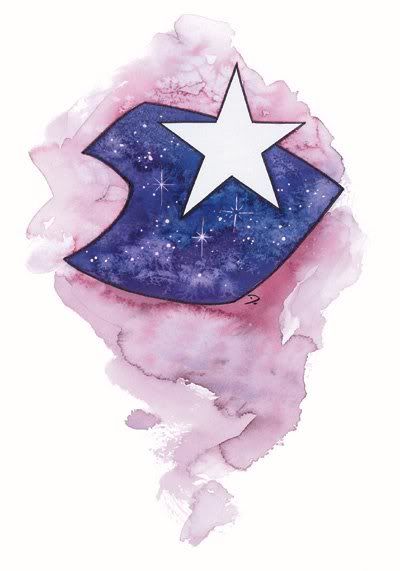 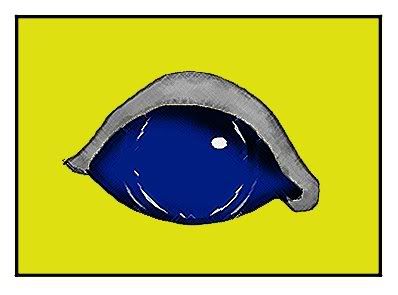 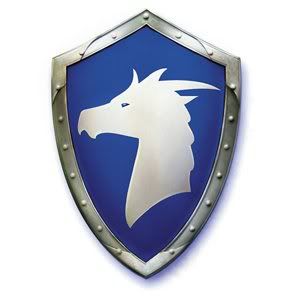 The Platinum Dragon, King of the Good Dragons, Lord of the North Wind, Bahamut The Platinum Dragon, King of the Good Dragons, Lord of the North Wind, Bahamut Lesser DeityAliases: Bahamut Symbol: Star above a milky nebula or a draconic eye set on a gold rectangle Home Plane: Unknown (Dragon Eyrie Post 1374 DR) Alignment: Lawful good Portfolio: Good dragons, wind, wisdom Worshipers: Good dragons, anyone seeking protection from evil dragons Cleric Alignments: LG, NG Domains: Air, Dragon*, Good, Luck, Protection (Nobility, Storm) Favored Weapon: Heavy pick (bite) Draconomicon 2E EntryIn the draconic pantheon, Xymor is the offspring of Lendys and Tamara. Xymor combines Lendys's sense of justice with Tamara's love of mercy. Xymor is thus the perfect enlightened Justicemaker, who knows when to temper justice with mercy and punishment with forgiveness. As such, he is worshiped mainly by golds, silvers, and bronzes, although a few brasses and coppers also pay him homage. He appears as a huge dragon wrapped in a scintillating aura of light so brilliant that it is impossible to tell his color. Races of the Dragon EntryBahamut is revered in many locales. Though all good-aligned dragons pay homage to Bahamut, gold, silver, and brass dragons hold him in particularly high regard. Other dragons, even evil ones (except perhaps his archrival Tiamat), respect Bahamut for his wisdom and power. In his natural form, Bahamut is a long, sinuous dragon covered in silverwhite scales that sparkle and gleam even in the dimmest light. Bahamut’s catlike eyes are deep blue, as azure as a midsummer sky, some say. Others insist that Bahamut’s eyes are a frosty indigo, like the heart of a glacier. Perhaps the colors merely reflect the Platinum Dragon’s shifting mood. DogmaBahamut is stern and very disapproving of evil. He brooks no excuses for evil acts. In spite of this stance, he is among the most compassionate beings in the multiverse. He has limitless empathy for the downtrodden, the dispossessed, and the helpless. He urges his followers to promote the cause of good, but prefers to let beings fight their own battles when they can. To Bahamut, it is better to offer information, healing, or a (temporary) safe refuge rather than to take others’ burdens upon oneself. An equally important aspect to Bahamut is his constant conflict with Tiamat. He continually stands in opposition to her world-dominating schemes. Most recently, she has begun a campaign to heavily populate the world with her spawn. Bahamut has answered this outbreak of evil by recruiting stalwart heroes to his side—the dragonborn. In addition to the dragonborn, Bahamut is served by seven great gold wyrms that often accompany him when he visits the Material Plane. ClergyBahamut accepts only good clerics. Clerics of Bahamut, whether they are dragons, half-dragons, or other beings attracted to Bahamut’s philosophy, strive to take constant but subtle action on behalf of good, intervening wherever they are needed but striving to do as little harm in the process as possible. Bahamut’s chief foe is Tiamat, and this enmity is reflected in the attitude of each deity’s worshipers. Followers of Bahamut respect Heironeous, Moradin, Yondalla, and other lawful good deities. 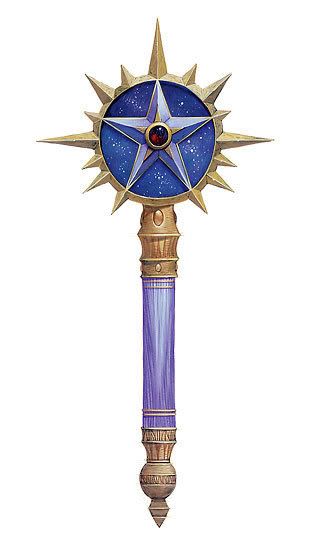 The Holy Symbol of Bahamut The Holy Symbol of BahamutBahamut’s worshipers are most apt to go on a quest to destroy or stop one of Tiamat’s spawn. Whenever they have a reasonable opportunity to do so, followers of Bahamut act to thwart Tiamat or her minions. PrayersWorshipers follow the philosophy that one should “pray with one’s deeds, not one’s mouth.” Each act that promotes the welfare of good dragonkind or thwarts the depravity of evil dragonkind is a prayer of action. TemplesTemples to Bahamut are rare in the extreme. Those that exist are beautiful, elegant structures with clean, simple lines. The furnishings of a temple are simple, without embellishment or adornment. The building includes meeting rooms where followers can gather to worship or to plan their next campaign against Tiamat’s spawn, as well as smaller, private rooms where individuals can pray, meditate, or rest and recuperate in privacy. Many gold, silver, and brass dragons maintain simple shrines to Bahamut in their lairs, usually nothing more elaborate than Bahamut’s symbol scribed on a wall. Bahamut is not appreciative of being honored by objects, emphasizing deeds instead. RitesBahamut’s worshipers and clergy don’t have formal rituals or ceremonies. The only activity that one would call a rite is the Rite of Rebirth (see page 8), by which a humanoid becomes a dragonborn. Herald and AlliesBahamut uses a mature adult celestial gold dragon as his herald. His allies include good dragons, half-dragons, draconic creatures, and dragonborn. If a dragonborn strays from her holy duties, Bahamut sends one of his aspects to visit her. The aspect endeavors to talk with the transgressor, and uses reason and diplomacy to remind her of the commitment she accepted when she became a dragonborn. The Cult of the Dragon EntryBahamut is a lawful good lesser power of Mount Celestia. His portfolio is good dragons, metallic dragons, wisdom, and enlightened justice (justice tempered with mercy and punishment with forgiveness), and his symbols are the polar star above a milky nebula or a reptilian eye superimposed over a square of gold. His domain, Bahamut's Palace, is located in Mercuria. In some traditions, he is said to be the son of Tamara and Lendys, and in others, he, Tiamat, and Null (or Faluzure) are all said to be children of Asgorath (Io). In the Realms, he is often known as Xymor. Dragons of Faerun Excerpts The Fall of the Gods (Time of Troubles 1359 DR) returned Bahamut to the land in Avatar form for the first time since the death of Marduk. (DoF page 9) Rise of the Dragon KingIn the Year of Serpent (1359 DR), Gareth Dragonsbane, future king of Damara, and his adventuring companions returned from an expedition to the Abyss, having stolen the Wand of Orcus, shattered it in the blood of an avatar of Tiamat (checking her plans once again), and returned to Damara with the blessing of Bahamut. Gareth brought with him the Tree-Gem, which, once planted, represented Bahamut's covenant to protect Damara against the influence of demons as long as the kingdom of Damara allied itself with the forces of good. In so doing, Gareth brought to Damara a measure of peace and freedom from demonic meddling that the rest of the Demonlands has never experienced. As Bahamut had hoped, the planting of the Tree-Gem sparked renewed interest in his teachings among the nondragon races. In the years that followed, good-aligned mortals across Faerûn heard the Call of Bahamut, and many pledged themselves to the service of the Platinum Dragon. The elite became platinum knights[Dra] or vassals of Bahamut[BoED]. Some of those who were called by Bahamut chose to undergo the Rite of Rebirth, transforming themselves into a long-forgotten race known as the dragonborn[RD]. As the ranks of his followers swelled, Bahamut rose in power, assuming the rank of lesser deity once again, while Tiamat did the same. (DoF page 9) Bahamut, The Platinum Dragon Notes: Xymor has ascended to deity status again as of 1373 DR, The Year of Rogue Dragons.Sources: Dragons of Faerun, Draconomicon 3E, Dracomomicon 2E, The Cult of the Dragon, Deities and Demigods, Races of the Dragon, Greg Hall (Bahamut Symbol #2) |
|
|
|
Post by Masterbard Alyster Darkharp on Jul 26, 2008 23:21:15 GMT -5
Garyx Firelord, All-Destroyer, Cleanser of Worlds Firelord, All-Destroyer, Cleanser of Worlds Lesser DeitySymbol: Reptilian eye superimposed over a flame
Home Plane: Unknown (is Pandemonium in non-realms 3E sources)
Alignment: Chaotic evil
Portfolio: Fire, destruction, renewal
Worshipers: Dragons, sorcerers, warlords, some druids
Cleric Alignments: CG, CN, NE, CE
Domains: Chaos, Destruction, Dragon*, Evil, Fire [Renewal]
Favored Weapon: Sickle (claw)
Races of the Dragon Entry
Garyx the All-Destroyer symbolizes the sheer power and destructive force of dragonkind. Some argue that Garyx is actually insane, as a result of his long residence on the Windswept Depths of Pandemonium. He appears much like a great wyrm red dragon.
Dogma
Garyx teaches by example, periodically traveling to the Material Plane to wreak unholy swaths of destruction across the landscape. Those who revere follow the example, using their power to bring ruin and devastation.
Clergy
Garyx pays little or no attention to his clerics and worshipers, but they do not care. They believe that he grants them the power to perform acts of destruction, and that is enough. Perhaps curiously, some druids also revere the renewal aspect of Garyx, knowing that some devastation is always necessary for rejuvenation. Garyx shares traits in common with Kord and Erythnul, but has no interest in alliances.
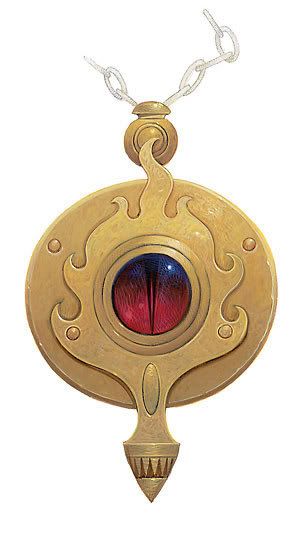 The Holy Symbol of Garyx The Holy Symbol of Garyx
Quests
Wars, battles, and campaigns of destruction are common quests for worshipers of Garyx.
Prayers
When lighting a fire, a worshiper of Garyx murmurs a benison such as “Grant me the power to destroy.”
Temples
Few temples to Garyx have been found, though his worshipers often carve his symbol near their handiwork.
Rites
Garyx’s clerics conduct a variety of rites connected to the seasons. At the winter solstice, they celebrate All-Consuming Night, when they keep a large bonfire lit and followers bring a variety of flammable items to be destroyed. At the spring equinox, they hold a Sanctification of Renewal in which the ashes at the site of the All-Consuming Night bonfire are sifted and examined. Any useful remains are taken to be reused. For instance, bits of metal are taken to be reforged into swords, armor, or other useful tools of destruction. Any seedlings that might have taken root in the area are nurtured.
Herald and Allies
The herald Garyx sends most often is a mature adult red dragon. His allies include chaotic dragonblood creatures of all kinds and fire elementals of all sizes.
The Cult of the Dragon Entry
Garyx is a chaotic evil intermediate power of the Abyss. His portfolio is fire-using dragons and destruction by flame, and his symbol is a reptilian eye superimposed over a red flame.
Draconomicon 2E Entry
Garyx represents the destructive or, perhaps, the cleansing influence of flame. He is portrayed as either the All-Destroyer or as the Cleanser of Worlds. He is worshiped under both aspects (obviously not by the same individual). In his destroyer aspect, he is worshiped by red dragons. As the Cleanser of Worlds, some rogue gold dragons.who have come to the dark conclusion that the only way to rid the world of evil is to sterilize it and start again, revere
him.
Garyx usually manifests himself as a huge dragon the color of fire (sometimes red, sometimes gold).
Notes: We do not know for certain that Garyx exists as a deity in official 3E Realmslore. He has multiple mentions in 2E Realmslore though, so I listed him here for the sake of completion, and in case I manage to run down an official 3E Realms mention of him. He does not exist to my knowledge in the Great Tree Cosmology, but since he is an official non-realms deity, and the great wheel and tree are connected via Sigil, the possibility of gaining knowledge of him does exist, however rare.
Sources:Draconomicon 3E, The Cult of the Dragon, Draconomicon 2E, Races of the Dragon |
|
|
|
Post by Masterbard Alyster Darkharp on Jul 26, 2008 23:21:53 GMT -5
Hlal 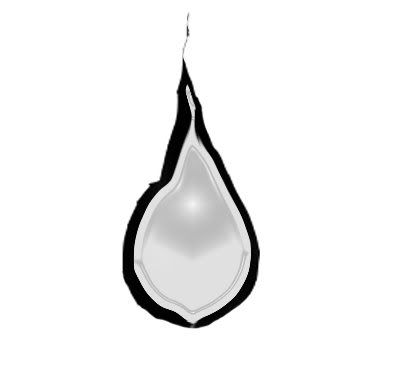 The Jester, The Keeper of Tales, The Persued The Jester, The Keeper of Tales, The Persued Lesser DeitySymbol: An open book, a single white flame Home Plane: The Dragon Eyrie (Varaskverth) Alignment: Chaotic Neutral Portfolio: Humor, tricks, messages Worshipers: Dragons Cleric Alignments: NG, CG, CN Domains: Chaos, Scalykind, Trickery Favored Weapon: Spear Races of the Dragon EntryHlal is a sleek, copper-colored dragon with a ready grin and a happy glint in her eye. Of the dragon gods, she is the most friendly to nondragons (even Aasterinian enjoys a reputation of playful danger). DogmaHlal enjoys sharing stories and songs with those who appreciate such things, regardless of the listener’s race or background. She has little use for tyrants—even well-meaning ones—and even less patience for cruelty or bullying. She teaches that one must be free of restraint, whether real or psychological, in order to freely express one’s opinions. ClergyHlal’s clerics are often multiclass cleric/bards, using music, poetry, and tall tales to spread the faith. Places of worship to Hlal are usually simple shrines, which can be packed up and moved to the next town or dragon lair at a moment’s notice. The followers of Hlal share much in common with those of Olidammara, and many characters pay homage to both deities simultaneously. Both Hextor and Vecna are among her chief enemies, because of their portfolios. 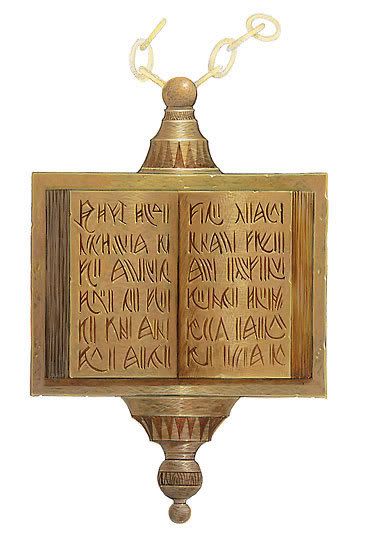 The Holy Symbol of Hlal The Holy Symbol of HlalWhatever Hlal sends a follower to do is worthy of being memorialized in story or song. Quests undertaken for Hlal often involve mistaken identity, impersonation, and merry resolution. They always feature ample measures of audacity, bravery, trickery, and humor. PrayersPrayers to Hlal center around stories and humor. They usually involve relating one of the many tales about Hlal and the heroic acts of her worshipers. TemplesEstablished temples to Hlal are only found in the largest of cities. They serve as much as performance or concert halls as they do places of veneration, because entertainment and worship are inextricably linked for the devout of Hlal. Even in the smallest of thorps, though, often a theatre, tavern, or other place of performance includes a small holy symbol of Hlal, reminding the performers that their actions honor that deity. RitesHer worshipers say that Hlal presides over the first performance of a new entertainment piece by one of her followers. An eager performer, conductor, or playwright often dedicates this initial presentation to Hlal’s glory (if serious) or for Hlal’s amusement (if comic). Herald and AlliesHlal’s herald is a very old copper dragon. Her allies include dragons, bards, and spellscales. The Cult of the Dragon EntryHlal is a chaotic good lesser power of Arborea and Ysgard. Her portfolio is draconic humor, inventiveness, and pleasure, and her symbol is a single white flame, representing the light of wit. In the Outer Planes, she is more commonly known as Aasterinian and is often regarded as chaotic neutral in alignment. Her domain in Arborea is unknown, but in Ysgard her domain, Brassberg, is in Nidavellir. Draconomicon 2E EntryHlal epitomizes draconic wit. Although she delights in sophisticated wordplay and the more dignified forms of humor, she can't resist the opportunity to play a prank on an unsuspecting victim; the more seriously that victim takes himself, the better. Myth has it that Hlal played a particularly elaborate practical joke on Null, and is now hard-pressed to stay one jump ahead of the angry Deathwyrm. Hlal is worshiped by coppers and by faerie dragons, although in neither case is she the only deity that these dragons worship (there's more to life than humor, after all... namely, treasure). Hlal appears in whatever form best suits her (doubtless humorous) purposes at the moment. If she's not actually in the process of playing a trick on someone, she usually chooses the form of a faerie dragon that glows with a yellowgold aura. Notes: We know that Hlal exists as a Deity in Official 3E Realmslore because she is mentioned in the Monster Deities Appendix of Faiths and Pantheons (page 221) and the Dragon Eyrie section of Players Guide to Faerun (page 150).Sources: Draconomicon 3E, The Cult of the Dragon, Greg Hall (Hlal Symbol #2), Draconomicon 2E, Faiths and Pantheons, Players Guide to Faerun, Races of the Dragon |
|
|
|
Post by Masterbard Alyster Darkharp on Jul 26, 2008 23:22:28 GMT -5
Task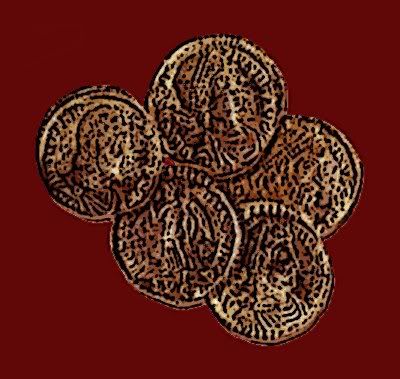 The Taker and Holder, Wrester The Taker and Holder, Wrester Greater Deity of GreedSymbol: A pile of five coins Home Plane: The Dragon Eyrie (The Furnace) Alignment: Chaotic Evil Portfolio: Greed, Selfishness Worshipers: Dragons Cleric Alignments: CE, NE, CN Domains: Chaos, Evil, Scalykind, Planning Favored Weapon: Bite Draconomicon 2E EntryWhile Astilabor is the deity of acquisition (with no stigma of evil attached), Task is undeniably the deity of greed. Task wants it all, no matter how he has to get it, no matter the cost to whoever currently owns what he wants. His followers share his attitudes. Task reveres greed and selfishness, and he sometimes rewards followers who show these characteristics in good measure (such rewards are never material, of course, since Task wouldn't give up anything that he owned). Myths claim that Task's lair in the plane of Pandemonium hides the largest and richest hoard in the universe (followers of Astilabor dispute this). Task is worshiped by the evil dragons, reds most of all, and even by some brasses. Task appears as a huge dragon whose hide is so studded with gems that it's impossible to tell what color he was originally. The Cult of the Dragon EntryTask is a chaotic evil lesser power of Pandemonium. His portfolio is greed and selfishness, and his symbol is a pile of five coins. Notes: We know that Task exists as a Deity in Official 3E Realmslore because he is mentioned in the Dragon Eyrie section of Players Guide to Faerun (page 150) and in the Monster Deities Appendix in Faiths and Pantheons (page 221 ).Sources: Draconomicon 2E,The Cult of the Dragon, Players Guide to Faerun, Faiths and Pantheons, Greg Hall (Task Symbol) |
|
|
|
Post by Masterbard Alyster Darkharp on Jul 26, 2008 23:23:10 GMT -5
Astilabor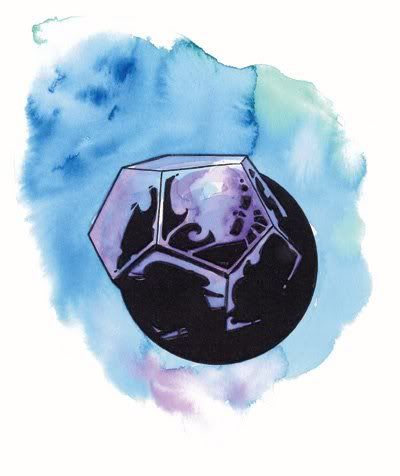 The Acquisitor, Hoardmistress The Acquisitor, Hoardmistress Lesser DeitySymbol: A 12-faceted gem Home Plane: Unknown (Is Outlands in non-realms 3E sources) Alignment: Neutral Portfolio: Acquisitiveness, status, wealth Worshipers: Dragonbloods, those who seek wealth Cleric Alignments: NG, LN, N, CN, NE Domains: Dragon*, Protection, Wealth* [Cavern, Metal] Favored Weapon: Scimitar (claw) Races of the Dragon EntryAstilabor represents the natural draconic desire to acquire treasure and power. She dislikes the naked greed displayed by Tiamat and her followers. She appears as a Huge dragon who shimmers with all the chromatic and metallic colors of dragonkind. DogmaAstilabor values wealth and power, but without any stigma of greed. She instills in dragonkind the innate need for collecting and protecting the hoard. She claims that she cannot abide theft of any kind from her worshipers, but often turns a blind eye if such acts are performed in the name of building one’s hoard. ClergyAstilabor accepts only clerics with an element of neutrality in their alignment, the better to remain pure to the goal of acquiring and protecting the hoard. Her clerics prefer not to become involved in confl icts between dragons, but often reward those whose hoards become large and valuable. Astilabor is revered by dragons of all types and alignments, but actively worshiped by few. Most at least scratch out her symbol as a protective ward over their hoards. Astilabor’s worshipers are friendly toward those of Moradin and Garl Glittergold (since those gods respect the value of a gem or coin as much as anyone), but they distrust followers of Olidammara, whom they believe to be thieves at heart. 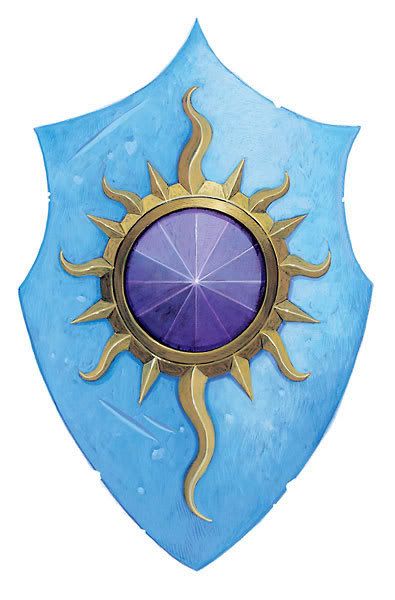 The Holy Symbol of Astilabor The Holy Symbol of AstilaborAcquiring a specific item of value or a set amount of gold to add to one’s hoard are the most common pursuits of the followers of Astilabor. If a worshiper offends her, the treasures gained by the quest are turned over to one of her temples. PrayersPrayers to Astilabor are often performed while counting one’s hoard. While running one’s hands or claws through a pile of gold coins, a worshiper might say, “All this gold belongs to me. May I add to my riches tenfold, tenfold times.” TemplesThere is a decided tension between Astilabor’s worshipers’ need to add to their own hoards and their desire to honor their deity. Temples to Astilabor are generally grand structures that are secure and well protected. The lavish furnishings and accoutrements are typically objects loaned to the temple by the congregation. A temple might have elaborate platinum candlesticks and wall sconces provided by one dragon and cloth-of-gold wall hangings provided by another. The ownership of each item is made clear by some means, usually a particular mark engraved on an item or sewn into it. RitesMost of Astilabor’s rites involve a group of supplicants seeking to gain wealth. Some of these groups resemble traditional adventuring parties. Herald and AlliesAstilabor’s herald is a neutral 19th-level draconic human rogue. Her allies include dragons, halfdragons, and draconic creatures. Sometimes these allies have celestial or fiendish lineage, but even then those individuals always have a neutral component to their alignment. The Cult of the Dragon EntryAstilabor is a chaotic neutral intermediate power of Limbo. Her portfolio is acquisitiveness, specifically the desire to acquire and hold wealth and by doing so gain status. Her symbol is a 12-faceted gem. Draconomicon 2E EntryAstilabor is revered by dragons of every species, since she is, in a way, an archetype of dragonkind. Astilabor represents the desire to acquire and hold wealth, greed, if viewed in an evil sense, but also the desire to gain status by acquiring wealth. Dragons that worship Astilabor sometimes promise the deity a share of their gains if she'll help them in an upcoming venture, but then they never sacrifice what they promised her. (How, after all, could the Hoardmistress respect them if they gave up their wealth so easily?) Astilabor manifests as a huge dragon that shimmers with all the chromatic and metallic colors of dragonkind. She is reputed to have a hoard, hidden somewhere in the plane of Limbo, that contains more wealth than that found on all the planets of the universe. She sometimes (very rarely) grants, boons from this staggering hoard to followers who have pleased her. Notes: We do not know for certain that Astilabor exists as a deity in official 3E Realmslore. She has multiple mentions in 2E Realmslore though, so I listed her here for the sake of completion, and in case I manage to run down an official 3E Realms mention of her. She does not exist to my knowledge in the Great Tree Cosmology, but since he is an official non-realms deity, and the great wheel and tree are connected via Sigil, the possibility of gaining knowledge of her does exist, however rare.Sources: Draconomicon 3E, Draconomicon 2E, The Cult of the Dragon, Races of the Dragon |
|
|
|
Post by Masterbard Alyster Darkharp on Jul 26, 2008 23:24:06 GMT -5
Kereska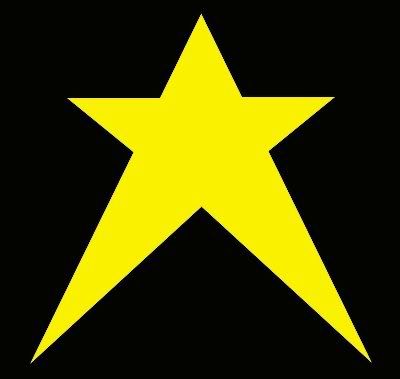 Wonderbringer, Light of Magic Wonderbringer, Light of Magic Lesser Deity of MagicHome Plane: Unknown (was Limbo in 2E, possibly Dragon Eyrie) Symbol: A five-pointed star, the lower two points extended Portfolio: Magic, Dragon Magic, Magical Creativity Alignment: Chaotic Neutral Draconomicon 2E EntryAccording to legend, it is Kereska Wonderbringer who first taught dragonkind how to wield the powers of magic. As such, she is still revered by dragons of all species (more so by the more magically adept, of course). Kereska is able to cast any known spell as many times per day as she likes, and since she is the font of magical creativity, she can create any new spell-like power on an instant's notice. Dragons researching new spells often invoke the name of Kereska before beginning. Kereska has the ability to imbue any dracoform with whatever level of spellcasting ability she wishes, and she can bestow new spells and spell-like powers upon any dragon that sufficiently pleases her. Although she always appears as a dragon, the other details of her appearance, size, color, etc..change from manifestation to manifestation. She is always surrounded by a pulsating aura of magical power, however. From the Kalzareinad Entry in The Cult of the DragonKereska subsumed the worship and portfolio of Kalzareinad (dead) during the Time of Troubles (1358 DR). The Cult of the Dragon EntryKereska is a chaotic neutral intermediate power of Limbo. Her portfolio is magic, specifically dragon magic, and magical creativity. Her symbol is a five-pointed star with the lower two points extended. Notes: We can only guess that Kereska does indeed exist in official 3E Realmslore, due to the fact that we know Kalzareinad (see Dragons of Fearun page 58) does (or did), and she absorbed his portfolio and worshippers in 2E Realmslore.Sources: The Cult of the Dragon, Draconomicon 2E, Greg Hall (Kereska Symbol) |
|
|
|
Post by Masterbard Alyster Darkharp on Jul 26, 2008 23:24:50 GMT -5
Lendys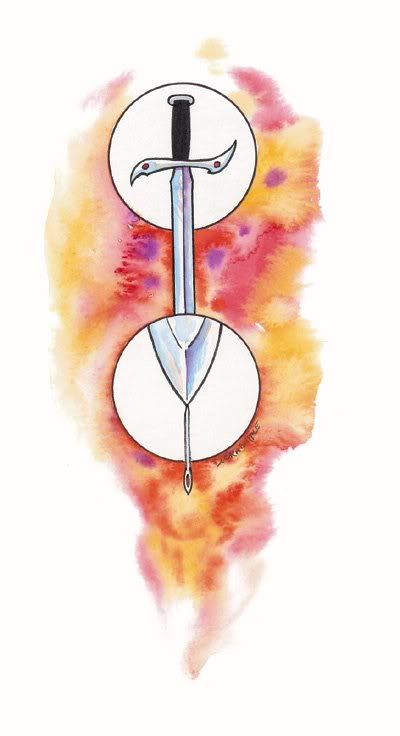 Scale of Justice, The Balancer, Weigher of Lives Scale of Justice, The Balancer, Weigher of Lives Lesser DeitySymbol: Sword balanced on a needle’s point Home Plane: Unknown (is Mechanus in non-realms 3E sources, possibly Dragon Eyrie) Alignment: Lawful neutral Portfolio: Balance, justice Worshipers: Dragons Cleric Alignments: LG, LN, N, LE Domains: Destruction, Dragon*, Law, Protection [Retribution] Favored Weapon: Longsword (claw) Races of the Dragon EntryUnlike Null, who judges the life of a dragon only after its death, Lendys metes out justice during a dragon’s life. His scales are a tarnished silver, some say because he cares more about judging others than tending to himself. DogmaLendys is the arbiter of dragonkind, serving as judge, jury, and executioner alike. When a dragon has committed an injustice against dragonkind, Lendys (or one of his trio of great wyrm silver dragons) is dispatched to deal out appropriate justice. Punishments are severe, and appeals unheard of. ClergyThe clerics and paladins of Lendys are justice-bringers, often serving as arbiters in local communities. In some cases, towns even rely on the local draconic worshiper of Lendys to parcel out justice. Clerics of Lendys get along well with worshipers of St. Cuthbert, and poorly with those who follow chaotic deities such as Kord, Olidammara, or Erythnul.  The Holy Symbol of Lendys The Holy Symbol of LendysLendys primarily assigns his followers to quests involving meting out punishment to a dragon who has harmed dragonkind. PrayersPrayers to Lendys focus on judgment. They are recited in solemn tones. TemplesTemples to Lendys are few. More often, a simple shrine, perhaps marked only by the god’s symbol, is set up in a courtroom or other justice-dispensing place. RitesFor followers of Lendys, any trial is a holy rite. The duty of weighing evidence and rendering judgment is taken very seriously. Although Lendys focuses his judgment exclusively on dragons, worshipers usually generalize any act of justice as an honor entrusted to them by their god. Herald and AlliesLendys uses a contingent of four marut inevitables as his herald. Acting in perfect unison, the construct performs the task the deity set them. His allies include silver dragons, inevitables, and draconic formians. If you use Draconomicon, the golems Draconomicon 2E EntryLendys is justice personified. He represents the principle that every action has a reaction, that the universe is like a bookkeeper's journal, and that everything must balance at the end. It is Lendys who ensures that he who does evil receives evil, that he who does good receives good, and that he who lives by the sword dies by the sword. Lendys has no mercy in his soul, nor forgiveness, and he gives no second chances. He is worshiped by the lawful dragons, but they usually try to balance his implacability with mercy of their own. (If mercy to a criminal be considered a crime, so be it.) Lendys appears as a huge, wingless, platinum-colored dragon. His eyes give forth beams of brilliant light from which no one can hide. The Cult of the Dragon EntryLendys is a lawful neutral intermediate power of Nirvana. His portfolio is balance and justice, and his symbol is a sword balanced on a needles point. He is the consort of Tamara. Notes: We know that Lendys exists in official 3E Realmslore because of his mention on page 100 of Dragons of Faerun, under the sidebar entitled 'The Ptarian Code'.Sources: Draconomicon 3E, Draconomicon 2E, The Cult of the Dragon, Dragons of Faerun, Races of the Dragon |
|
|
|
Post by Masterbard Alyster Darkharp on Jul 26, 2008 23:25:24 GMT -5
Tamara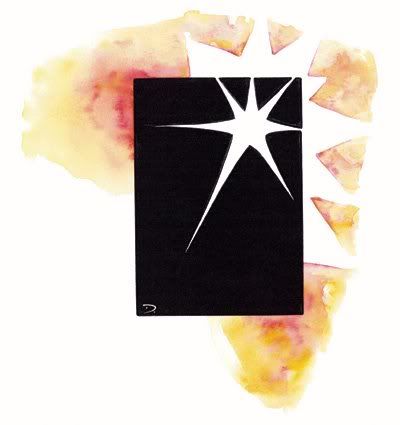 Her Beneficence, Her Mercy Her Beneficence, Her Mercy Lesser DeitySymbol: Seven-pointed star on a field of black Home Plane: Unknown (is Elysium in non-realms 3E sources, possibly Dragon Eyrie) Alignment: Neutral good Portfolio: Life, light, mercy Worshipers: Good dragons, healers, those who desire mercy Cleric Alignments: LG, NG, CG, N Domains: Dragon*, Good, Healing, Strength, Sun [Family] Favored Weapon: Scimitar (claw) Races of the Dragon EntryTamara is the kindest and most benevolent of the draconic deities. Some mistake this characteristic for weakness, though such beings don’t make the same error twice. She appears as a luminously beautiful silver dragon, her eyes shining with the brightness of the sun. DogmaTamara believes in mercy both in life and in death. Not only does she heal the sick and tend the injured, she also delivers a merciful end to those dragons nearing the end of their natural life span. She fiercely detests those who artificially prolong the life of a dragon, particularly when it is against that dragon’s will. ClergyTamara’s clerics are healers, but also deliverers of death to those who would escape it. They prefer to destroy any undead they encounter, particularly draconic undead (such as dracoliches). Though theirs is a peaceful and merciful faith, the worshipers of Tamara do not hesitate to stand against evil or tyranny. She counts Pelor among her staunchest friends and Falazure, Hextor, Nerull, and Erythnul among her enemies. QuestsThe most common quest from Tamara is undertaken in opposition to some endeavor of Falazure. Those seeking undeath are corrupting the natural order and must be stopped, so Tamara’s quests focus on destroying or thwarting undead creatures, especially undead dragons. PrayersPrayers to Tamara have joyous, uplifting cadences and are often melodious paeans to light and life. TemplesTamara’s temples are not simple places of worship. They tend to be hospitals, infirmaries, or hospices where the sick are welcomed. Severely or terminally ill individuals are cared for with dignity and respect. When a patient dies, his passing is greeted as good news, a merciful escape from the cares of this life. RitesBirths, returns to life (such as through raise dead or resurrection), and even final deaths are celebrated. They are opportunities to reflect upon and praise Tamara’s generosity, mercy and peace. Herald and AlliesAn old silver dragon is Tamara’s primary herald. Her allies include good dragons, Draconomicon 2E EntryTamara is the consort of Lendys. She strives ever to temper his hard-edged justice with a sense of forgiveness. The preservation of life and happiness is all to Tamara, and if justice must be somewhat bent to achieve that goal, so be it. Some of the Lawful Good dragons (golds, silvers, and brasses) still worship both Lendys and Tamara, while some brasses and coppers worship Tamara alone. Tamara appears as a huge, wingless dragon.slightly smaller than Lendys, the color of burnished platinum. She radiates a comfortable aura of warmth and love. The Cult of the Dragon EntryTamara is a neutral good intermediate power of Elysium. Her portfolio is life, light, mercy, and forgiveness, and her symbol is a seven-pointed star on a field of black. She is the consort of Lendys. Notes: We know that Tamara exists in official 3E Realmslore because of her mention on page 100 of Dragons of Faerun, under the sidebar entitled 'The Ptarian Code'.Sources: The Cult of the Dragon, Draconomicon 2E, Draconomicon 3E, Dragons of Faerun, Races of the Dragon |
|
|
|
Post by Masterbard Alyster Darkharp on Jul 26, 2008 23:25:58 GMT -5
Zorquan High One, Greatest Wyrm High One, Greatest Wyrm Intermediate Deity of DragonkindAlignment: Nuetral Home Plane: Unknown ( was The Outlands in 2E) Symbol: A black circle superimposed on a larger, concentric white circle Portfolio: Dragonkind and Dragonness Worshipers: Dragons Cleric Alignments: LG, NG, CG, LN, N, CN, LE, NE, CE Draconomicon 2E EntryAlthough Zorquan is often described as the deity of dragonkind, he is really the deity of dragonness. As Corellon Larethian represents the central ideals of elvenkind, so does Zorquan represent the central ideals of dragonkind. He represents power, pride, which all dragons, even golds, have in abundance, and, most importantly, status. Although he is generally classed as neutral, Zorquan's alignment would more properly be described as, any. Zorquan is totally unconcerned with creatures other than dragons, except when their behavior affects dragonkind. He is the implacable enemy of any who would harm dragonkind,not, you will note, individual dragons. Adventurers who slay the occasional black or blue dragon will never feel Zorquan's wrath. Members of all dragon species worship Zorquan. He can manifest himself as a perfectly-formed version of any species of dragon. Whatever his form, his eyes crackle with sparks, sometimes spitting lightning bolts that flash and crack around his body. Zorquan is said to live somewhere on the Prime Material plane. Many legends tell of dragons with the temerity to visit his halls, but none give details on how to get there. The draconic pantheon once contained many more gods, including deities dedicated to protecting hatchlings, finding mates, and vengeance upon enemies. Over the millennia, however, these deities have been largely forgotten. All dragons, no matter what deity they follow, believe in a life after death. (The concept of the draconic afterlife will be discussed further in Chapter 9.) The Cult of the Dragon EntryZorquan is a neutral intermediate power of the Outlands. His portfolio is dragonkind and dragonness (the essence of that which is dragons), and his symbol is a black circle superimposed on a larger concentric white circle. Notes: We do not know for certain that Zorquan exists as a deity in official 3E D&D or Realmslore. He has multiple mentions in 2E Realmslore though, so I listed him here for the sake of completion, and in case I manage to run down an official 3E mention of him.Sources: Draconomicon 2E, The Cult of the Dragon, Greg Hall (Zorquan Symbol) |
|
|
|
Post by Masterbard Alyster Darkharp on Jul 26, 2008 23:26:41 GMT -5
Tchazzar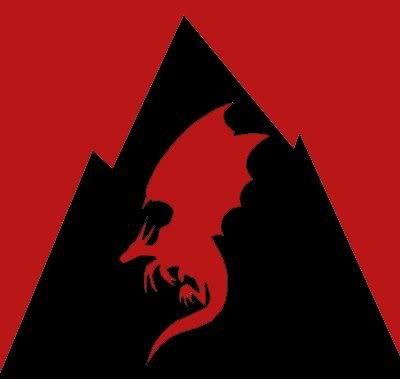 Father of Chessenta, the Invincible Warrior, Chosen of Tiamat, Sceptenar of Cimbar Father of Chessenta, the Invincible Warrior, Chosen of Tiamat, Sceptenar of Cimbar Immortal Dragon Quasi-DeitySymbol: A red dragon before a black mountain Portfolio: Battle, Chessenta, Strength, War Home Plane: Prime material Alignment: Chaotic Evil Worshipers: Chessentans, Bards, Dragon Disciples, Intitiates of Draconic Mysteries, Talons of Tiamat, Dragonsong Lyricists, fighters, monks and sorcerers Cleric Alignments: CE, NE, CN, LE Favored Weapon: Longsword Lost Empires of Faerun EntryThe great warlord known as Tchazzar led the cities of Chessenta in rebellion against Unther more than four hundred years ago. After establishing Chessenta as an independent land and ruling it for many years, the mighty hero-king disappeared from the realm without a trace. In truth, Tchazzar was a great red dragon who had hoped to achieve godhood by founding a temple and establishing a heroic myth to attract worshipers. To that end, he used shapechanging magic to take human form and become a hero in the eyes of Chessentans. Some time after he achieved his goal of attaining divinity, Tchazzar was devoured by Tiamat, but many Chessentans still revere the memory of the legendary warlord. Dragons of Faerun EntryIn the Year of Shadows (1358 DR), the Avatar Crisis forced the gods of Toril to walk among their followers in mortal form, upsetting many divine machinations, including those of the Dragon Queen. During the Time of Troubles, Gilgeam destroyed Tiamat, seemingly ending her threat to his eternal rule. In truth, however, Tiamat's essence was splintered among three powerful dragons in the region. The largest of the three, Tchazzar, consumed the other two, therefore meeting the conditions the Dragon Queen had laid down in advance. Tchazzar was thereby transformed into Tiamat anew and ceased to exist as Tchazzar. As of 1374 DR, The Father of Chessenta has been brought back to life by the Dragon Queen and returned to the land. It is only a matter of time before all of Chessenta, Threskel, and Unther acknowledges the rule of the new Sceptenar of Cimbar. Despite his many years, Tchazzar has the vigor of a powerful male red dragon in the prime of life. Unlike a typical great wyrm red dragon, his scales are the bright, glossy scarlet of a wyrmling, except along his wings where they are the color of obsidian. Tchazzar's eyes are pitch black orbs, and his horns are jet black with sharp, serrated edges. Tchazzar returned to Toril in the last days of the Rage of Dragons, materializing above the Bay of Chessenta in the midst of a naval battle between the cities of Cimbar and Soorenar. After wreaking havoc on both fleets in an orgy of destruction, the Father of Chessenta seemed to regain a measure of his self-control. After destroying or driving out nearly every dracolich and dragon that Alasklerbanbastos had sent into Chessenta, Tchazzar then flew off toward Cimbar. After a brief battle with Cimbar's overmatched defenders, he quickly installed himself in the Palace of the Sceptenar and set about solidifying his rule by slaughtering all remaining opposition within the city. Hoard: Tchazzar has claimed Cimbar's palace treasury as his hoard. Mixed coins worth 109,948 gp, blood of Tchazzar (set of 12 matched red tears, 1,000 gp each or 20,000 collectively), moonstones of Nanna-Sin (17 sacred moonstones, 50 gp each or 1,500 gp collectively), speaking stones of the Broken Pyramid (32 pieces of tomb jade found on the tongues of the Untheri sorcerers interred within, 1,000 gp each), tears of Talona (set of 3 matched king's tears, each depicting a lost priest-lich of Talona, 5,000 gp each or 25,000 gp collectively), 12 foot-tall gold statuettes depicting the god-kings of Unther during the Battle of the Gods (1,200 gp each), 8 bejeweled dragon eggs (1,500 gp each), 4 mithral chalices (800 gp each), 6 royal gowns adorned with tremairs (a pink variety of tremolite) (1,000 gp each), armor of Horus (+4 electricity resistance fire resistance scale mail), billet of Ultham (lesser rod of quickened metamagic), Chaathuulandroth's bulwark (+3 improved acid resistance dragonhide heavy shield), elixir of Horus-ReMag, eye of the Sceptenar (crystal ball with see invisibility), hammer of Ramman (+2 shocking burst thundering warhammer), lantern of revealing, phoenix helm[Mag], 25 +1 radiant holding[Mag] arrows, robe of stars, robe of the Dragon Queen (lesser vestments of power[Mag]), rod of fury +3[Mag], rod of splendor, scarab of protection, scarab of scintillating auras[Mag], scepter of Cimbar*, scroll of foresight, scroll of time stop, scroll of wish, serpent ring[SK], silver ankh of Ra[LE], staff of stunning (+3 knockback quarterstaff[Mag]), Tchazzar's claw-ring (ring of greater electricity resistance), wand of restoration (25 charges). Lair: As the newly crowned Sceptenar of Cimbar, Tchazzar has reclaimed the Great Palace of Cimbar as his lair. The alabaster citadel sits atop a low hill in Old Cimbar in the shadow of the now-abandoned Great Temple of Gilgeam. Tchazzar had the Great Palace built to his specifications when he last ruled Chessenta, and its sprawling galleries easily accommodate the great wyrm's tremendous bulk. Tactics: Convinced of his innate superiority over all living things, Tchazzar has no fear, but he sees physical conflict as beneath his godlike self. The Sceptenar of Cimbar surrounds himself with powerful minions he can dispatch to destroy any threat. On the rare occasions when he is physically threatened, Tchazzar's rage is unmatched, for he feels that his foes are undermining his hard-earned divine status. Such fights bring out his basest nature, and he wades into melee, using his physical weapons and breath weapon without thought of the cost to allies. Known Allies: Although he serves as Tiamat's champion in Faerûn, Tchazzar keeps the Dragon Queen's church at arm's length, for he is not interested in calling attention to the fact that he operates at Tiamat's whim. Tchazzar's closest allies are Gestaniius of the Dragonsword Mountains (LE female fiendish great wyrm blue dragon) and Skuthosiin "the Venomous" of the Methwood (LE male fiendish old green dragon cleric 1/unholy ravager of Tiamat[Dra] 6 [Tiamat]). Tchazzar consumed the other two members of Tiamat's Trinity during the Time of Troubles to complete the rebirthing of Tiamat. Like Tchazzar, Gestaniius and Skuthosiin were restored to life and returned to the land by the Dragon Queen reborn in fiendish form. Known Enemies: As the Dragon Queen's Chosen (which is currently nothing more than a title), Tchazzar is Tiamat's champion in Faerûn, unleashing his fearsome wrath on whoever draws her ire. In the short term, Tchazzar's enemies include the cities of Airspur, Luthcheq, Mordulkin, and Soorenar. In the longer term, Tchazzar aims to smash any Dragon Cult cell that refuses to acknowledge Tiamat's rule. Tchazzar also seeks the destruction of his ancient rival, Alasklerbanbastos, despite the latter's recent alliance with the Church of Tiamat in Unther, and he views any dragon who serves the Great Bone Wyrm as a heretic. Schemes: Now that his rule of Cimbar is secure, the son of Rauthstokh "Redbones" plots to rebuild his kingdom, claiming all the lands of Chessenta, Threskel and Unther. First, Tiamat's Chosen intends to bring one Chessentan city after another under his banner through threats and secret negotiations. Aside from the mad leaders of House Karanok in Luthcheq, the leaders of the other major Chessentan cities have already begun quietly negotiating their admittance into Tchazzar's burgeoning empire. Once all of Chessenta but Luthcheq is in his grasp, the Father of Chessenta intends to overrun not just the City of Madness, but the plains of Threskel as well, all in the name of the Dragon Queen. He knows this will be too great a provocation for his ancient rival, Alasklerbanbastos, to ignore and that the Great Bone Wyrm will be forced to muster his army of undead dragons in defense. By opposing Tchazzar's march into Threskel, Alasklerbanbastos should anger the Dragon Queen and shatter the tentative alliance the Great Bone Wyrm's Dragon Cult cell has forged with the followers of Tiamat in Free Unther. As if that were not enough, Tchazzar is already planning for the day he turns his armies against the crusaders of Mulhorand. When Tchazzar's army sweeps in from the west, Gestaniius will unleash her forces from the east, cutting off Mulhorand's supply lines. Meanwhile Skuthosiin's army will march down the coast, blocking any Mulhorandi attempt to reestablish their supply lines by sea. Tchazzar CR 40Male fiendish great wyrm red dragon, dragon ascendant[Dra] 12CE Colossal dragon (fire, extraplanar) Init: +4; Senses: blindsense 60 ft., darkvision 120 ft., keen senses; Listen +63, Spot +63 Aura: awesome aura (360 ft., DC 44) Languages: Abyssal, Aragrakh, Draconic, Infernal AC: 50, touch 11, flat-footed 50 (-8 size, +39 natural,9 deflection) hp: 1,144 (52 HD); fast healing 3; DR 25/epic Immune: ability damage, ability drain, energy drain, fire, mind-affecting spells and abilities, transmutations (polymorph, petrification, form-altering attacks) SR: 33 Fort +41, Ref +32, Will +41 Weakness: vulnerability to cold Speed: 70 ft. (14 squares), fly 270 ft. (clumsy), swim 70 ft., Flyby Attack, Hover, Wingover Melee bite +63 (4d8+18) and 2 claws each +61 (4d6+9) and 2 wings each +61 (2d8+9) and tail slap +61 (4d6+27) Space: 30 ft.; Reach 20 ft. (30 ft. with bite) Base Atk: +53; Grp +87 Atk Options: crush, smite good (1/day, +20 damage), tail sweep, Awesome Blow, Cleave, Improved Bull Rush, Large and in Charge[Dra],  , Snatch, Tempest Breath[Dra] Special Actions breath weapon Combat Gear: crownring of Tchazzar*, Orb of Dragonkind (red dragon) Sorcerer Spells Known (CL 19th):9th (5/day) -- deafening breath[Dra], meteor swarm (DC 28) 8th (7/day) -- breath weapon admixture[Dra], demand (DC 27), enervating breath[Dra] 7th (7/day) -- greater arcane sight, greater stunning breath[Dra], project image (DC 26) 6th (7/day) -- antimagic field, legend lore, true seeing (DC 25) 5th (8/day) -- burning blood[Dra], ethereal breath[Dra], greater wings of air[Dra], superior magic fang[Dra] 4th (8/day) -- dispelling breath[Dra], fire shield, rebuking breath[Dra], wingbind[Dra] (DC 23) 3rd (8/day) -- blinding breath[Dra], fireball (DC 22), nondetection, tongues (DC 22) 2nd (8/day) -- bull's strength, cat's grace, eagle's splendor, fox's cunning, razorfangs[Dra] 1st (9/day) -- alarm, expeditious retreat, feather fall, true strike, unseen servant 0 (6/day) -- arcane mark, detect magic, detect poison, light, mage hand, mending, open/close, prestidigitation, read magic Spell-Like Abilities: (CL 19th): 12/day -- locate object 3/day -- suggestion (DC 21) 1/day -- discern location, find the path Abilities: Str 46, Dex 10, Con 31, Int 26, Wis 27, Cha 28 SQ: alternate form, immortal Feats: Awesome Blow, Cleave, Draconic Knowledge[Dra], Fast Healing[Dra], Flyby Attack, Great Fortitude, Hover, Improved Bull Rush, Improved Initiative, Improved Speed[Dra], Iron Will, Large and in Charge[Dra], Lightning Reflexes, Multiattack,  , Snatch, Tempest Breath[Dra], Wingover Skills: Appraise +63, Bluff +64, Concentration +65, Diplomacy +68, Disguise +9 (+11 in character), Escape Artist +55, Intimidate +66, Jump +73, Knowledge (arcana) +63, Knowledge (history) +32, Knowledge (the planes) +33, Listen +63, Search +63, Sense Motive +63, Spot +63, Survival +8 (+10 on other planes) Possessions: combat gear plus amulet of supremacy[Dra] Awesome Aura (Ex) Tchazzar can inspire terror in creatures that view him. Those within 360 feet of the dragon that have 40 HD or fewer must attempt a DC 44 Will save. Success indicates that the target is immune to Tchazzar's awesome aura for 24 hours. On a failure, a creature is shaken or dazed (dragon's choice) for 4d6 rounds. If Tchazzar attacks or charges, shaken creatures must succeed on a second DC 44 Will save or become frightened for 4d6 rounds. All allies within the radius receive a +4 morale bonus on attack rolls, saves, and checks, and foes that fail their saves take a -4 morale penalty on attack rolls, saves, and checks. Allies can be excluded (dragon's choice) from the effect of the aura. Breath Weapon (Su) 60-ft. cone, once every 1d4 rounds, damage 24d10 fire, Reflex DC 40 half. Code of Conduct Tchazzar loses his awesome aura (and does not regain his frightful presence) if he ever willingly commits an action opposed to his chaotic evil alignment. Crush (Ex) Area 30 ft. by 30 ft.; Large or smaller opponents take 4d8+27 points of bludgeoning damage and must succeed on a DC 40 Reflex save or be pinned. Immortal (Su) Tchazzar is a quasi-deity and can no longer die from natural causes. He does not need to eat, sleep, or breathe. He can still be slain in physical or magical combat, and he is still subject to death from massive damage. Snatch (Ex) Against Large or smaller creatures, bite for 4d8+18 per round or claw for 4d6+9 per round. Tail Sweep (Ex) Half-circle 40 ft. in diameter; Medium or smaller opponents take 2d8+27 points of bludgeoning damage (Reflex DC 40 half). Notes: Tchazzar now exists as a Quasi-Deity, as of the end of 1373 The Year of Rogue Dragons, when he was returned to life and the material plane by Tiamat. 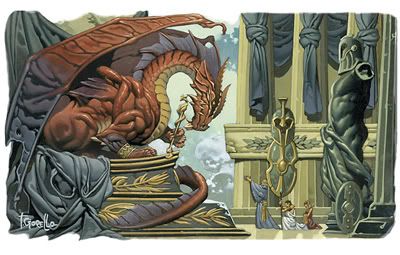 Tchazzar, the Invincible Warrior Tchazzar, the Invincible Warrior |
|
|
|
Post by Masterbard Alyster Darkharp on Jul 26, 2008 23:27:21 GMT -5
Kalzareinad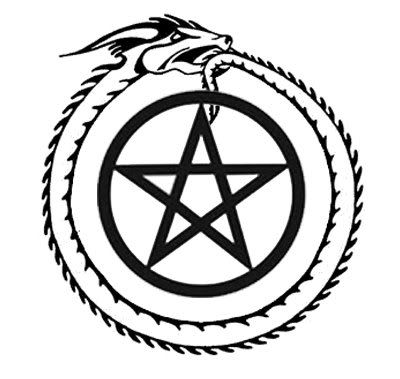 Keeper of Dark Wonders Keeper of Dark Wonders Demigod of Dragon MagicSymbol: A five pointed star encircled by a dragon grabbing it's own tail in it's mouth Alignment: Neutral Evil Home Plane: The Gray Wastes Portfolio: Dragon Magic, Dark Secrets Kalzareinad was a neutral evil demipower of the Gray Waste. His portfolio was dragon magic, specifically the uncaring, evil, or selfish application of dragon magic. His symbol was a five-pointed star encircled by a dragon grabbing its own tail in its mouth. His worship and portfolio were entirely subsumed by Kereska during the Time of Troubles (1358 DR), and he passed quietly into deific death shortly thereafter in the Astral Plane. Notes: Kalzareinad is a dead deity, included here for the sake of completion. We do know that Kalzareinad did indeed exist according to official 3E Realmslore because of mention of him in the adventure titled 'The Cliffs of Karthaut' which begins on page 58 of Dragons of FearunSources: The Cult of the Dragon, The Symbol used is a combination of two pieces of stock clipart |
|
|
|
Post by Masterbard Alyster Darkharp on Jul 28, 2008 13:23:59 GMT -5
Tiamat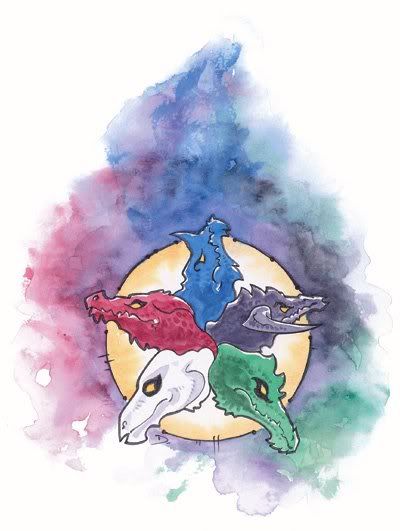 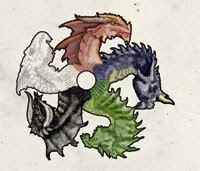 The Dragon Queen, The Chromatic Dragon, Nemesis of the Gods, The Dark Lady, Queen of Chaos, the Undying Queen, Bane of Bahamut, The Avaricious The Dragon Queen, The Chromatic Dragon, Nemesis of the Gods, The Dark Lady, Queen of Chaos, the Undying Queen, Bane of Bahamut, The Avaricious Lesser Faerunian DeitySymbol: Five-headed dragon Home Plane: Dragon Eyrie (The Cave of Greed) Alignment: Lawful evil Portfolio: Evil dragons, evil reptiles, greed, Chessenta Worshipers: Chromatic dragons, Cult of the Dragon, evil dragons, evil reptiles, fighters, sorcerers, thieves, vandals Cleric Alignments: LE, LN, NE Domains: Evil, Law, Scalykind, Tyranny Favored Weapon: A dragon head (heavy pick) Faiths and Pantheons EntryTiamat (tee-a-maht) is a greedy, vain, and arrogant goddess who embodies all the strengths of her chromatic progeny but few of their weaknesses. She is entirely focused on the acquisition of personal power and wealth and views mortals as hapless pawns in her struggles with other deities. She can be charming and fey when necessary, but her self-serving, evil, reptilian nature is readily apparent to those who look. The church of Tiamat is regimented by a strict hierarchy of ranks and titles. Clerics of Tiamat are primarily occupied by the twin tasks of acquiring an ever-increasing hoard of wealth for the faith and sabotaging the faiths of other deities. As a result, they occupy most of their waking hours with an unending series of thefts, assassinations, acts of vandalism, and arson. In Unther and Chessenta they are primarily concerned with seizing as much power as possible, while in western Faerun, the cult’s agents are focused on infiltrating and subverting the Cult of the Dragon. Clerics of Tiamat pray for their spells at dusk, in hopes she will return the sun the following morning, as part of a ritual known as Tithing. The Tithing requires a small tithe, typically several gold coins or a small gem, which are hidden in the cleric’s cupped hands as the cleric’s prayers are offered, then buried. Tiamat’s clergy also perform numerous other daily ceremonies in homage to their mistress. The Rite of Respect is a complicated ritual of abasement and appeasement that must be performed while approaching any spawn of the Dragon Queen. This ceremony does not provide any ritualistic protection from the dragon’s fury, but failure to perform the ceremony with rigorous perfection is sure to draw the great reptile’s ire. In Unther, the Dark Scaly Ones have proclaimed the day of the first full moon after Midsummer a holy day dedicated to the Dark lady. Known as the Festival of Vengeance, this day marks the defeat of Gilgeam by Tiamat, Nemesis of the Gods. In Unthalass the day is marked by general anarchy, rioting, and widespread mayhem incited by the clergy and the faithful and is punctuated by the consummation of long-simmering acts of revenge. During this time, the clerics of the Mulhorandi and Faerunian pantheons seek to contain the looting and destruction, but prominent officials must beware of the numerous assassination attempts executed by Tiamat’s worshipers. Many clerics multiclass as divine disciples, fighters, sorcerers, or (if associated with the Cult of the dragon) wearers of purple. History/RelationshipsTiamat is an interloping deity, brought to Faerun along with the rest of the Untheric pantheon. Her battles with those deities are legendary in Unther, and the Nemesis of the Gods was blamed for every setback experience by Unther. As a result, her small cult survived as the surviving Untheric gods became increasingly tyrannical, and eventually she regained sufficient strength to destroy Gilgeam during the Time of Troubles. Her foes include Bane and Ilmater, and she has no known allies. DogmaRival deities of all creeds and from every pantheon are inherently tyrannical. They seek only power, at any cost, despite their honeyed words. The Dragon Queen is the only being powerful enough to defy the gods and overthrow their despotic rule, as demonstrated by her overthrow of the other Untheric deities. Work tirelessly toward the day when Tiamat will banish the gods from Faerun and unite the world under her rule. Toward this goal, follow her commands unquestioningly and be willing to sacrifice yourself in her service. To overthrow the gods requires power, and power is acquired through the accumulation of wealth and magic. Power demands respect. Chromatic dragons everywhere are to be venerated as the spawn of the Dragon Queen and paid homage. When Tiamat assumes her throne, her draconic children shall serve her as dukes, and her clergy as their mortal vassals. Excerpt from Races of the DragonQuestsThe followers of Tiamat are sent on a variety of quests to further her grand machinations. Some are easily understood, such as aiding one of her spawn against a dragonborn who seeks to destroy it. Others are less obvious and include tasks as varied and hard to understand as burying a specifi c magic item at a designated place. PrayersTiamat urges her evil dragonblood followers to go forth and populate the world, fill it with her spawn, and either destroy or enslave all others. Prayers to Tiamat focus on the goal of world domination.  The Holy Symbol of Tiamat The Holy Symbol of TiamatThough most evil dragons honor Tiamat, few keep shrines dedicated to her in their lairs because they don’t want Tiamat’s greedy eyes gazing at their treasure hoards. Instead, they dedicate vast, gloomy caverns to their deity and keep them stocked with treasure and sacrifices. RitesTo commemorate a victory such as destroying a town, repulsing a thief seeking to pilfer from one’s hoard, or gaining a great treasure, the followers of Tiamat celebrate by indulging in great wickedness, including torturing prisoners or even fighting one another to prove their supremacy. Herald and AlliesTiamat’s herald is an old red dragon. Her allies include evil dragons, baatezu, and evil draconic creatures of all sorts. The Cult of the Dragon EntryTiamat is a lawful evil lesser power of Baator. Her portfolio includes evil dragons, chromatic dragons, evil reptiles, greed, and the Faerûnian nation of Chessenta. Her symbol is a five-headed dragon. Her domain, Tiamat's Lair, is located in Avernus. In some traditions, she, Bahamut (Xymor), and Null (or Faluzure) are all said to be children of Asgorath (Io). In the Realms, she is known as Tchazzar in the nation of Chessenta. Note: Tiamat is actually a part of the Faerunian Pantheon, not the Draconic Pantheon. She was included here for the sake of completion.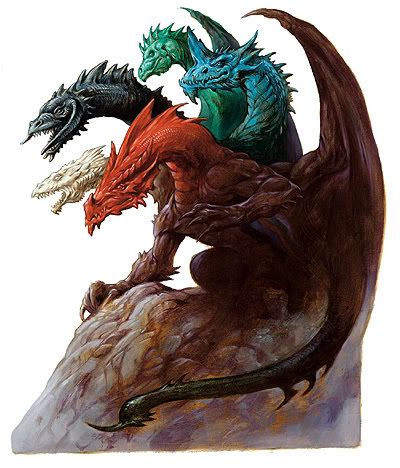 Tiamat, The Dragon Queen Tiamat, The Dragon Queen |
|
|
|
Post by Masterbard Alyster Darkharp on Jul 28, 2008 18:42:27 GMT -5
Aasterinian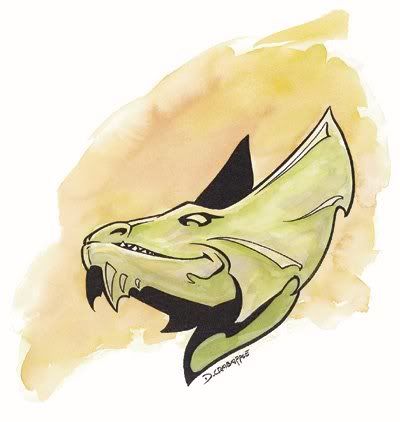 Messenger of Io Messenger of Io DemigodSymbol: Grinning dragon’s head, grinning brass dragon head Home Plane: Unknown (is Outlands in non-realms 3E sources) Alignment: Chaotic neutral Portfolio: Learning, invention, pleasure Worshipers: Chaotic dragons, free thinkers Cleric Alignments: CG, CN, CE Domains: Chaos, Dragon*, Luck, Travel, Trickery (Charm, Illusion, Trade) Favored Weapon: Scimitar (claw) Races of the Dragon EntryAasterinian is a cheeky deity who enjoys learning through play, invention, and pleasure. She is Io’s messenger, a huge brass dragon who enjoys disturbing the status quo. She loves all who enjoy innovation and whimsy and is accepting of all dragonblood creatures. Spellscales prove exceptionally amusing to her. She enjoys their changeable natures. DogmaAasterinian is flighty and quick-witted. She encourages her followers to think for themselves, rather than relying on the word of others. The worst crime, in Aasterinian’s eyes, is not trusting in yourself and your own devices. ClergyAasterinian’s clerics are typically wanderers who travel in disguise or secrecy. The majority of her clerics are draconic or half-dragon humanoids. Spellscales who become clerics often find Aasterinian the most compatible deity for them. Her followers enjoy friendly relations with those of Garl Glittergold, Fharlanghn, Olidammara, and similar deities. 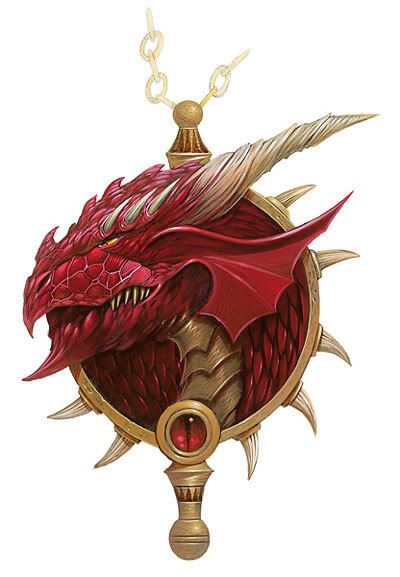 The Holy Symbol of Aasterinian The Holy Symbol of AasterinianAasterinian’s quests are more variable than most other deities’ tasks. There’s no predicting what she’ll ask of her follower. Almost all involve travel and new experiences, though. The quests upon which she sends a supplicant tend to focus more on the journey than the destination. PrayersAasterinian values diversity of experience, learning, and innovation. Prayers to her often take the form of expressions of desire for change. One daily prayer is “Let today differ from both yesterday and tomorrow,” expressing a desire for new experiences. TemplesTemples to the goddess are rare in the extreme, though simple shrines dot the landscape—quiet, hidden places where worshipers can rest peacefully during their travels. The architecture of such shrines is generally simple, with building designs that emphasize functionality and comfort. A shrine typically has a library, or at least a shelf holding a few miscellaneous books, with a sign indicating that travelers are welcome to take a book if they leave one book to replace it. RitesEvery time a worshiper learns or creates something new, he is honoring Aasterinian. Whether laughing with pleasure, smiling with delight, or sighing with contentment, the Messenger’s followers remember their god. Herald and AlliesAasterinian’s herald on the Material Plane is an ancient brass dragon with a turquoise-sheened forehead bearing a golden star in the center. Her allies are chaotic or neutral dragons, half-dragons, and draconic creatures of all sorts. Faiths and Pantheons Entry"Erevan’s boon companion is Aasterinian, an aspect of the draconic deity Hlal. Erevan and Aasterinian are almost never separated and their legendary adventures inspire younger elves who dream of emulating the mythic duo’s daring exploits."We do know that Aasterinian exists in the Great Tree Cosmology as an aspect of Hlal due to the information being included in the History/Relationships section on Erevan in Faiths and Pantheons.Sources: Draconomicon 3E, Defenders of the Faith, Monster Mythology, Races of the Dragon. |
|
|
|
Post by Masterbard Alyster Darkharp on Feb 16, 2009 0:54:01 GMT -5
Sardior The Ruby Dragon, Master of the Gem Dragons Lesser DeitySymbol: A ruby with an inner glow Home Plane: Prime Alignment: Neutral Portfolio: Neutral dragons, night, psionics, secrets Worshippers: Neutral dragons, psions and psychic warriors Cleric Alignments: Any neutral. Domains: Knowledge, Scalykind (Forgotten Realms Campaign Setting), Trickery Favored Weapon: Claw Sardior (sar- dee-or) is known in a few small circles. Even though he is the Master of the Gem Dragons, in reality he does not require much from his followers, and he does not try to guide their decisions. The gem dragons, in return, look upon him as the ideal and strive to be more like him. In his natural form, Sardior is a long sinewy dragon covered with deep ruby red scales. At a distance, he might be mistaken for an ancient red wyrm, but the playful expression seen in his eyes makes him very much unlike the reds. He is also known to be a great conversationalist, and the unguarded had best be prepared for his sharp wit. He makes his home in a huge floating castle, which orbits the world and stays forever in the shadows from the sun. On the nights it can be seen, viewers mistake it for a small red moon. DogmaSardior just wants to learn more. The more you know, the better off you will be, but just learning for learning's sake is not what Sardior stresses. No, gaining knowledge should not just be reading from books. The trick for Sardior is to get someone else to read the book, then tell him all about it. He also has a fondness for gems of all kinds, especially rubies. Clergy and TemplesSardior has few clergy, and even fewer temples. Temples dedicated to him tend to be located in high areas with clear views of the night sky and close to a community of some sort. Most gem dragons keep a ruby on a small pedestal in their lairs as a shrine to him. His clergy generally dress in the appropriate fashion for the area in which they reside. They then embellish the look with an abundance of jewelry in their everyday wear. Many seek out the clergy as sources of knowledge, and most of the clergy could be considered sages on various subjects. The temple gains its wealth from the charges from these services. The prominent members of a temple are also on the list for an invitation to social functions. They are personable, knowledgeable, and great storytellers. They also appear to have little interest in politics, which makes those around them less concerned with the information they reveal to the clergy. Source: Wizards.com Psionic Bestiary: The Legend of Sardior This thread was compiled referencing the following sources:  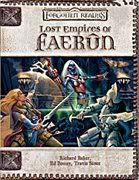 *Reference: Wizards.com Thanks to Jimkaf and a big thanks to catmage for help locating references. |
|
Deleted
Deleted Member
Posts: 0
|
Post by Deleted on Jan 24, 2010 15:35:37 GMT -5
Updated footnotes for Hlal & Asterinian (Thanks to Ancient for finding references to them in Third Edition source).
Updated footnotes for Tchazzar & Xymor to reflect changes to their status as of 1373 DR, The Year of Rogue Dragons.
|
|

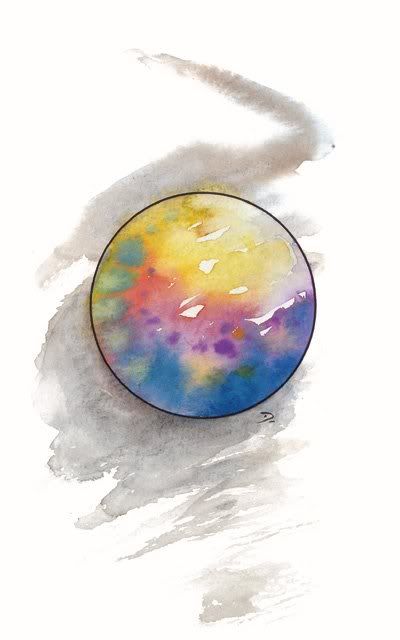











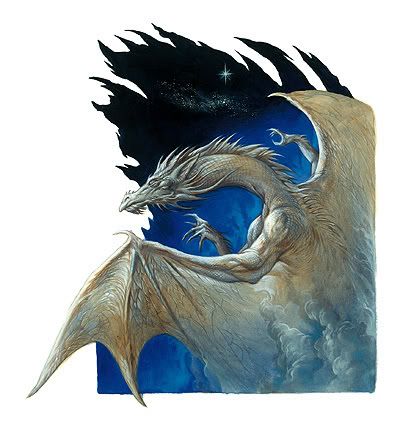














 , Snatch, Tempest Breath[Dra]
, Snatch, Tempest Breath[Dra]







